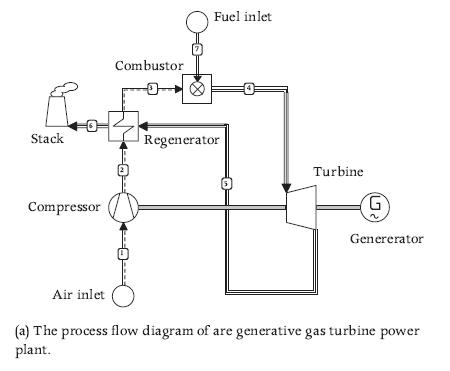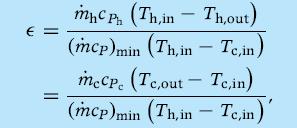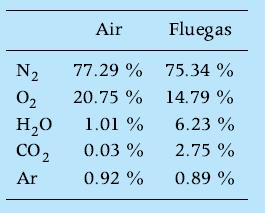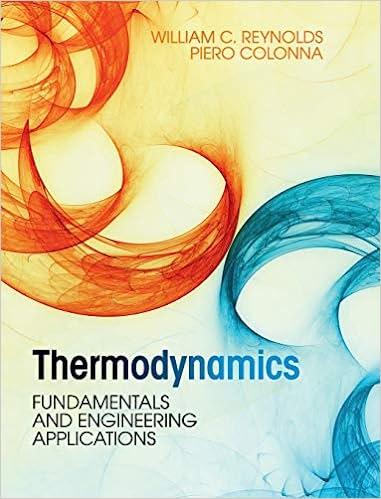Combustion gas with the composition of Exercise 7.15 at the inlet of the reheated stages of a
Question:
Combustion gas with the composition of Exercise 7.15 at the inlet of the reheated stages of a gas turbine is at 1400 K and 40 bar. The gas expands to atmospheric pressure. Between the high pressure and low pressure turbines, the gas is reheated at a constant pressure of 10 bar up to 1400 K. Assume that the efficiency of both turbines is 0.90, and that there are no pressure losses in the reheater. Calculate:(a) The specific expansion work for each turbine stage,(b) The specific energy as heat that must be supplied through the reheater,(c) The increase in specific work if compared to a single expansion stage with no reheat, and(d) The pressure ratio that maximizes the power output of the turbine.
Data From Exercise 7.15
In the regenerative gas turbine power plant whose process flow diagram is shown in Figure 7.27a, the mass flow of air entering the compressor at 1 bar and 25?C is 17.9 kg/s. The pressure ratio of the compressor is 9.9. The regenerator effectiveness is 0.9. The effectiveness of a counter flow heat exchanger is defined as


where subscripts h and c stand for the hot and the cold stream, respectively, and (m?cP)min is the smallest heat capacitance of these two streams. The isentropic efficiency of the compressor is 0.89 and that of the turbine is 0.92.The turbine inlet temperature is 1160?C. The mass flow of fuel entering the combustor is 0.36 kg/s and the lower heating value of the fuel is 38 MJ/kg (Dutch Slochteren natural gas). The air and exhaust gas composition are2

Assume that there are no pressure or thermal losses anywhere in the system and that no air is spilled from the compressor for turbine blade cooling. Determine the net mechanical power output in kW and the conversion efficiency of the system.
Step by Step Answer:

Thermodynamics Fundamentals And Engineering Applications
ISBN: 9780521862738
1st Edition
Authors: William C. Reynolds, Piero Colonna





